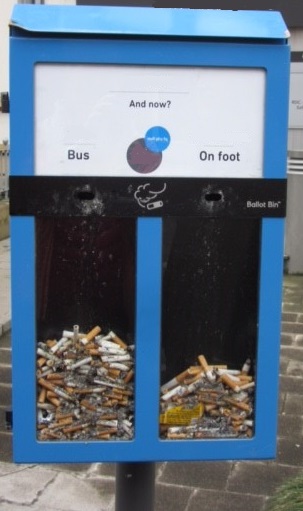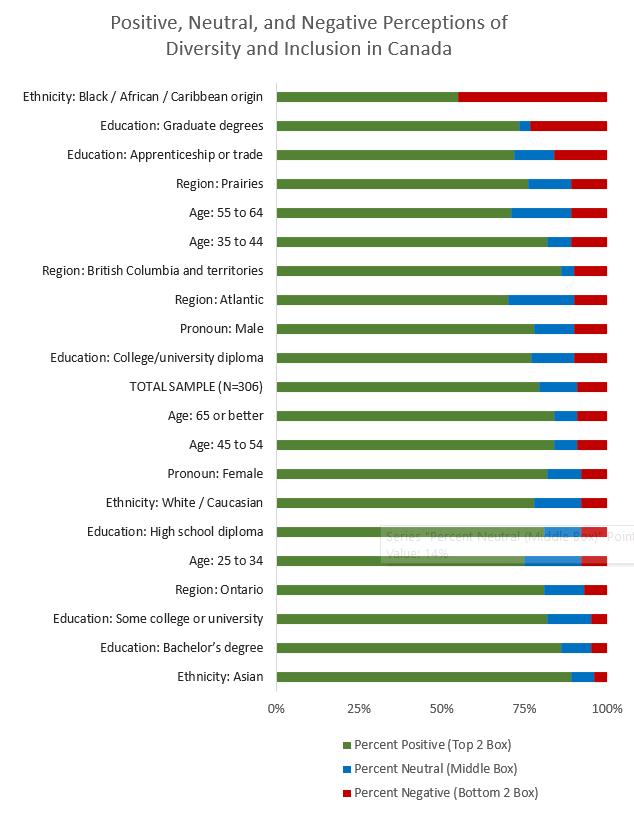It can be really hard to ‘make’ people do things. Chances are, when you ‘make’ them do something, it’s because they don’t actually want to do it and they may try to avoid doing it. So how can we ‘make’ someone:
- take more care to be clean,
- exercise more,
- eat better,
- take more public transit, or
- put their litter in the garbage?
Nudging is the answer. Nudging is a psychological principle (and Nobel Prize winning theory) made famous by Richard Thaler and Case Sunstein’s in their book, Nudge. It’s a technique for adjusting something in order to subconsciously change people’s behaviours in a predictable way.

It’s not a process of removing choices or tricking people into a specific choice. People are still free to do or not do, start or stop. It’s about offering people options in a way that makes the desirable option (being clean, exercising, eating better) preferable to the less desirable option (littering, driving instead of taking the bus). And, it’s usually done in a cost-effective way because it’s a small redesign or innovation of something that’s already going to happen.
In the marketing space, nudges can be as simple as creating more effective copy. Tell people which particular product is the best seller (social proof heuristics), limited edition or available today only (scarcity heuristics), or recommended by experts (authority heuristics). Or, speed up the customer journey and make the checkout process easier with social proof recommendations, limited time discount codes, and pre-checked sign-up options. IHUTs, product, and package tests can help you quickly identify the best nudges.
In more serious applications, it’s pre-checking organ donation cards and giving options to round up every credit card charge to an even number and move those pennies into savings.
For inspiration, here are some inexpensive and transparent examples of nudging that had drastic impacts on people’s behaviour.
- Toilet flies! One of the most famous examples of nudging is the fly in the toilet. Though the idea is more than 110 years old, Schiphol airport in Amsterdam introduced the fly to their urinals in the 1990s in hopes of keeping their restrooms cleaner, and reducing cleaning costs. With no words of encouragement or instruction, and just the cost of etching a fly into each urinal, men took aim resulting in an 80% reduction in spillage. That’s an effective nudge!
- Piano stairs. In an age where cars are winning and waistlines are losing, anything that encourages people to get more exercise is a win. The Stockholm metro took this as a challenge and turned its stairs into piano keys. People clamoured to take the stairs and ‘play the piano’ rather than use the boring escalator – 66% more! Now, piano stairs are showing up all around the world encouraging people to get moving and be just a bit healthier.https://www.youtube.com/watch?v=2lXh2n0aPyw
- Pre-sliced apples. In 2013, Cornell University wanted to encourage more healthy eating and decide to try offering pre-sliced apples instead of whole apples to high school students. By making it easier for students to choose to eat apples, which might normally leave students with sticky fingers and wanting to dispose of the apple core, they increased consumption of apples by 71%.

- Butt voting. We’ve all seen the images of rivers and lakes polluted with waste. Any little thing that can be done to encourage people to dispose of their litter appropriately is a good thing. Cigarette butts regularly litter sidewalks and streets (you know who you are!) and many cities are now running impromptu polls based on cigarette butt voting. A redesign of the butt containers into polling containers now incentivizes people to dispose of their butts properly. They can just drop their butt into the side of the box that best reflects their opinion to the question.
- Two is better than one! Have you ever had heartburn or indigestion necessitating the use of an antacid? Think back to how many tablets you used. Alka-Seltzer instructions dictate the use of one tablet, but the image we’re used to seeing shows the use of two tablets. Their research from the 1960s showed just how powerful an image of using two tablets was and sales of their product vastly increased as a result.
For product marketers, the answer is simple. Make sure to incorporate nudges! Provide the social proof via customer reviews. Provide the authority proof via recommendations from experts. Let people know they only have to spend $1 more to get the $50 shipping for free. Pre-check the box that is in their best interest. Run the focus groups, individual interviews, and quantitative questionnaires
to discover the tiny design changes that will guide your customers towards the choice that is genuinely in their best interest.
At the same time, don’t take it too far. People understand what nudging is and they know when it’s just a ploy to make a sale.
Sound interesting? Learn more from Richard Thaler in his talk at the Royal Society for the encouragement of Arts, Manufactures and Commerce.
If you’re all on board with nudging and are ready to identify the best nudge for your product via consumer resaerch, please get in touch with us!
You might like to read these:



